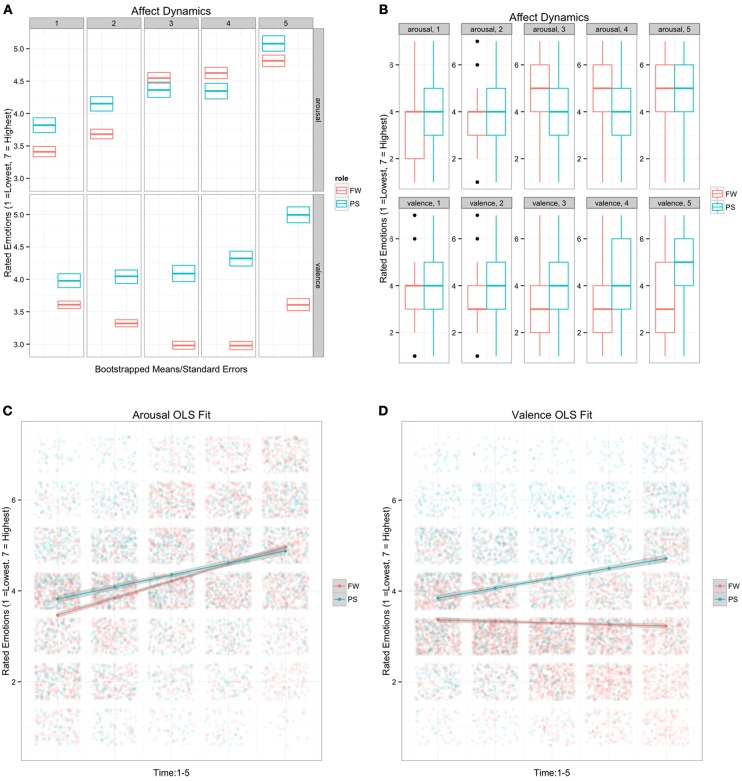Figure 3.
Data presents exploratory graphs of the role-by-time trend using classical Ordinary Least Squares (OLS) estimation. Panel (A) shows bootstrap means and standard errors from OLS regression, indicating statistically significant main effects for the interactions of role and time on both arousal and valence. Boxplots in Panel (B) and raw data plots with regression lines for (C) arousal and (D) valence suggest broad response variances among ratings of individual participant expressions at the different stages of the ritual. Doubt about the extent to which this diffuse pattern depends on rater effects must be included in any probability model. Dependencies from clustering parameters—time within individuals and events—must also be included within such a probability model because these dependencies invalidate the assumptions of classical regression and ANOVA. Bayesian Generalized Linear Mixed Effects models accommodate dependencies inherent in data such as ours while also propagating doubt arising from rater effects. Importantly, our interest was not in excluding a null hypothesis—our study has no null hypothesis—but rather in quantifying uncertainty about parameter estimates.

